-
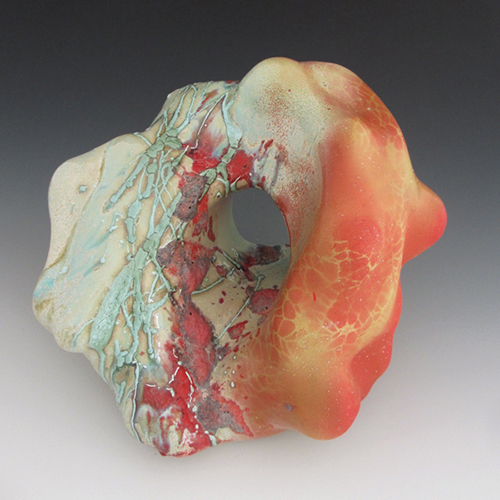 2022 Emerging Artist: Dominique StutzMy pieces are built using a combination of various ceramic techniques: slab construction, coiling, stamping, press molding, pinching, wheel throwing, and carving.
2022 Emerging Artist: Dominique StutzMy pieces are built using a combination of various ceramic techniques: slab construction, coiling, stamping, press molding, pinching, wheel throwing, and carving. -
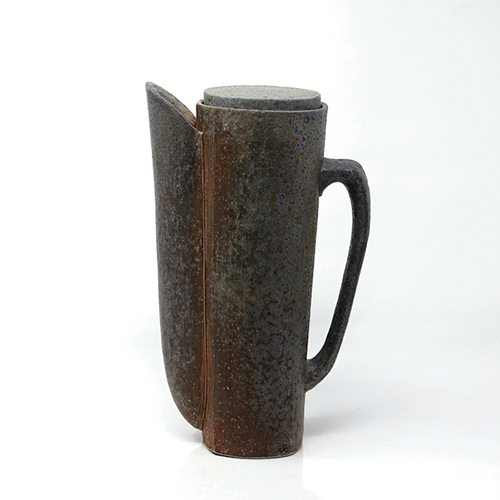 2022 Emerging Artist: Carter PasmaI make pots that are intended for use in everyday life, and I want everyone to be able to use and experience my work. I think that a relationship can be developed with the work through use.
2022 Emerging Artist: Carter PasmaI make pots that are intended for use in everyday life, and I want everyone to be able to use and experience my work. I think that a relationship can be developed with the work through use. -
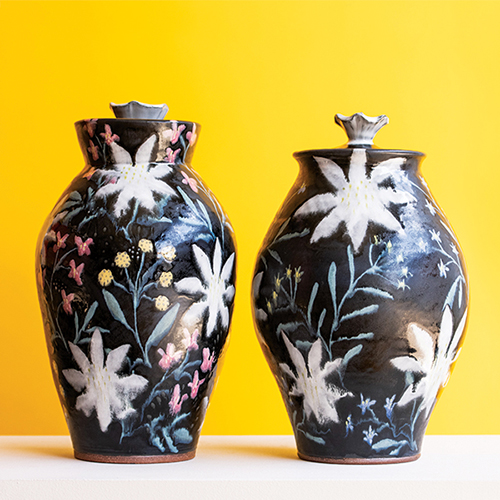 2022 Emerging Artist: Ruth EasterbrookMy forms derive from multiple sources of research and inspiration. I look to historical ceramics as well as the dishes I use in my daily life as the foundation for proportions, practical solutions, and a starting point of my pots.
2022 Emerging Artist: Ruth EasterbrookMy forms derive from multiple sources of research and inspiration. I look to historical ceramics as well as the dishes I use in my daily life as the foundation for proportions, practical solutions, and a starting point of my pots. -
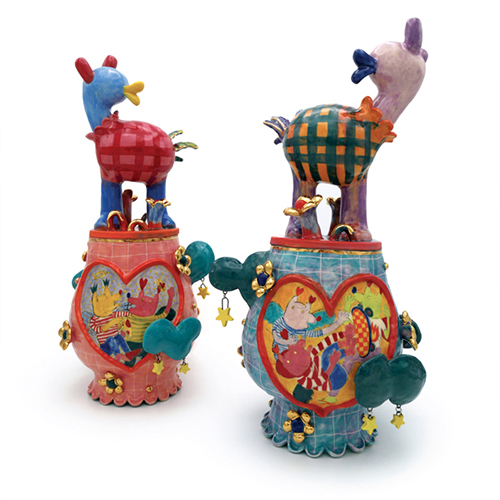 2022 Emerging Artist: Chanakarn SemachaiI hope my artwork both challenges and encourages my audience. While it is not a brand-new methodology, once I started to make multi-media work in my own studio practice, I started to notice and be drawn to that type of work in general.
2022 Emerging Artist: Chanakarn SemachaiI hope my artwork both challenges and encourages my audience. While it is not a brand-new methodology, once I started to make multi-media work in my own studio practice, I started to notice and be drawn to that type of work in general. -
 2022 Emerging Artist: Jane MargaretteThe pictorial protagonists of my work come from the natural world: winged creatures, bugs, flowers, and fruit. And it is this contradiction between their desires and their abilities that defines the work.
2022 Emerging Artist: Jane MargaretteThe pictorial protagonists of my work come from the natural world: winged creatures, bugs, flowers, and fruit. And it is this contradiction between their desires and their abilities that defines the work. -
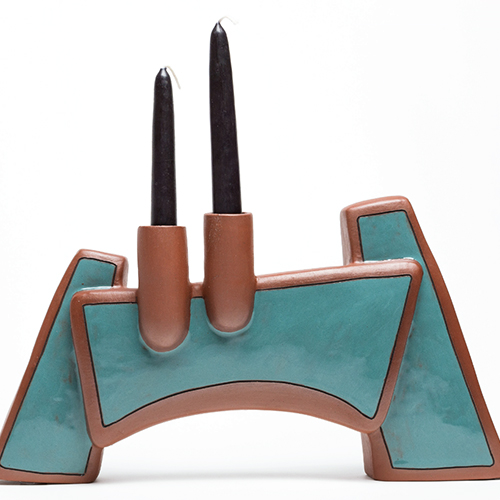 2022 Emerging Artist: Taylor MezoAlmost everything I make is inspired by cars, specifically classic cars from the 1950s and 1960s. For my surfaces, I choose bold colors that are reminiscent of cars from that period of time (fun colors like teal, pink, Bermuda blue).
2022 Emerging Artist: Taylor MezoAlmost everything I make is inspired by cars, specifically classic cars from the 1950s and 1960s. For my surfaces, I choose bold colors that are reminiscent of cars from that period of time (fun colors like teal, pink, Bermuda blue). -
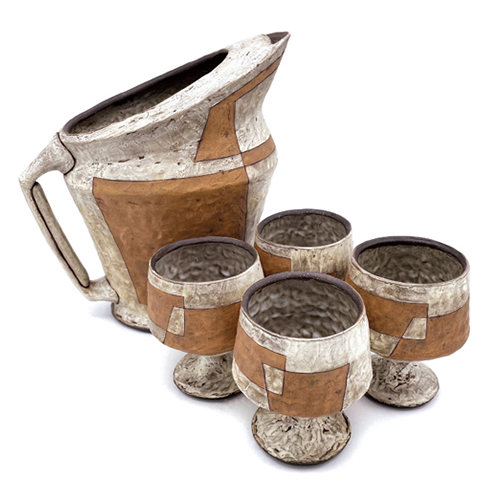 2022 Emerging Artist: Bekah BlissMy interest in architecture and mid-century design influences the layered motifs I use to divide the surface and provide contrast to the form. Leaving evidence of the pinched construction creates a weathered-looking surface.
2022 Emerging Artist: Bekah BlissMy interest in architecture and mid-century design influences the layered motifs I use to divide the surface and provide contrast to the form. Leaving evidence of the pinched construction creates a weathered-looking surface. -
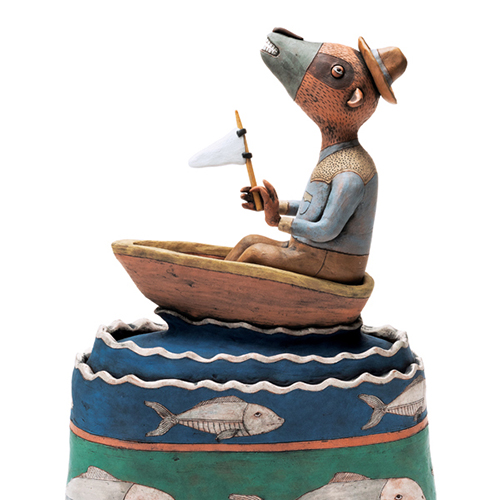 2022 Emerging Artist: Rickie BarnettIn the studio, I tend to always start out with a loose plan, pinching tons of little parts that I can choose from along the way. I find that having these options helps me to have moments of play where I can explore—stacking and arranging elements as I go.
2022 Emerging Artist: Rickie BarnettIn the studio, I tend to always start out with a loose plan, pinching tons of little parts that I can choose from along the way. I find that having these options helps me to have moments of play where I can explore—stacking and arranging elements as I go. -
 2022 Emerging Artist: Amy IrishI take a painterly approach to surfaces, beginning with a rich, red earthenware clay as my canvas. Then, I create colorful underpaintings loaded with motion and movement.
2022 Emerging Artist: Amy IrishI take a painterly approach to surfaces, beginning with a rich, red earthenware clay as my canvas. Then, I create colorful underpaintings loaded with motion and movement. -
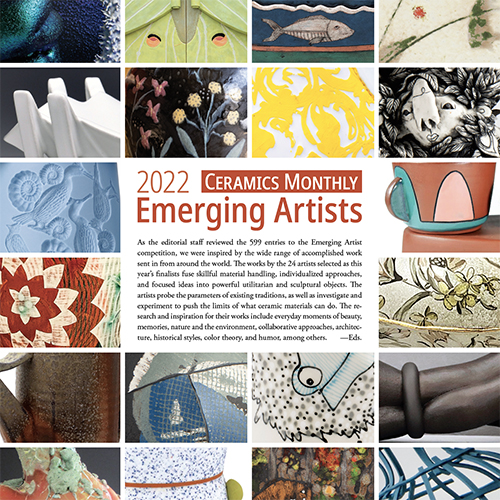 Ceramics Monthly Emerging Artists 2022Ceramics Monthly’s 2022 Emerging Artists create innovative ceramic objects and installations that captivate, challenge, and inspire their audiences. The work of these 24 artists demonstrates the strength and skill within the ceramic field today.
Ceramics Monthly Emerging Artists 2022Ceramics Monthly’s 2022 Emerging Artists create innovative ceramic objects and installations that captivate, challenge, and inspire their audiences. The work of these 24 artists demonstrates the strength and skill within the ceramic field today. -
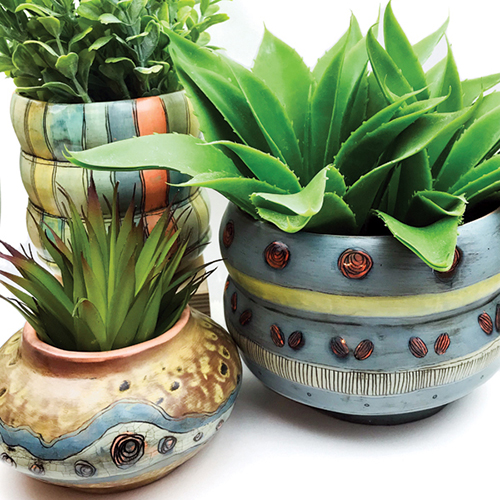 Studio Visit: Megs LeVesseur, Columbus, OhioFrom her efficient 200-square-foot studio in a historic cottage, Megs LeVesseur creates a wide range of brightly colored vessels that are inspired by the beauty found in everyday life.
Studio Visit: Megs LeVesseur, Columbus, OhioFrom her efficient 200-square-foot studio in a historic cottage, Megs LeVesseur creates a wide range of brightly colored vessels that are inspired by the beauty found in everyday life. -
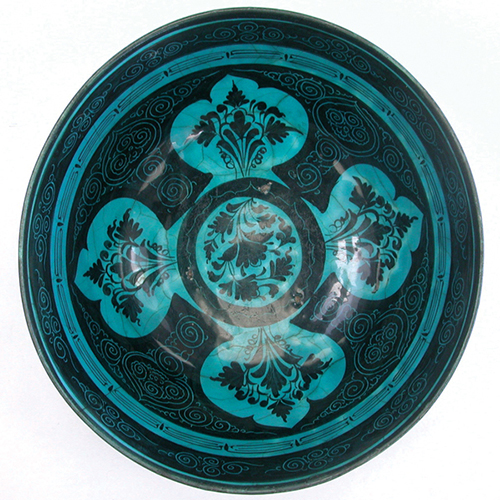 Clay Culture: Digital InpaintingMachine-learning techniques are being tested to help restore ancient and historical artifacts. Despite computational and technological hurdles, this method shows promise for restoring ancient Persian pottery.
Clay Culture: Digital InpaintingMachine-learning techniques are being tested to help restore ancient and historical artifacts. Despite computational and technological hurdles, this method shows promise for restoring ancient Persian pottery. -
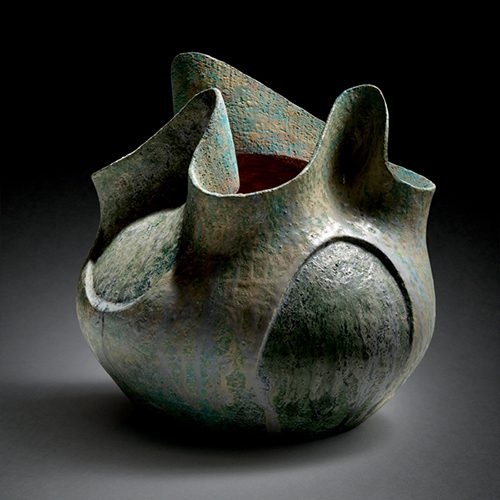 Exposure: May 2022Images from Current and Upcoming Exhibitions
Exposure: May 2022Images from Current and Upcoming Exhibitions -
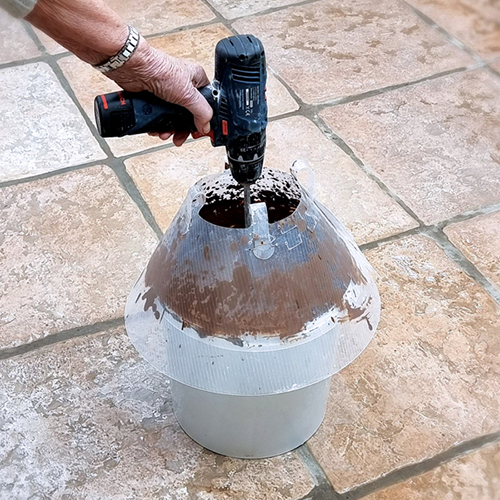 Quick Tip: Splatter-free Studio HackReclaiming clay has always proved to be a messy studio task. Somehow, I always managed to get clay splatter on the ceiling and walls no matter how careful I was.
Quick Tip: Splatter-free Studio HackReclaiming clay has always proved to be a messy studio task. Somehow, I always managed to get clay splatter on the ceiling and walls no matter how careful I was. -
 From the Editor: May 2022We start out each new year with the selection process for the Ceramics Monthly Emerging Artist competition, which is open to artists worldwide who have been pursuing a career in clay for ten years or less.
From the Editor: May 2022We start out each new year with the selection process for the Ceramics Monthly Emerging Artist competition, which is open to artists worldwide who have been pursuing a career in clay for ten years or less. -
 Techno File: Rapid Bisque FiringMost beginning potters pay little attention to bisque firings until they experience an explosion. More often than not, glaze blemishes can be traced directly to improper bisque firings. Taking a cue f
Techno File: Rapid Bisque FiringMost beginning potters pay little attention to bisque firings until they experience an explosion. More often than not, glaze blemishes can be traced directly to improper bisque firings. Taking a cue f -
 Spotlight: Engaging and CuratingKate Lydon reflects on her 35-year career at Contemporary Craft in Pittsburgh, Pennsylvania.
Spotlight: Engaging and CuratingKate Lydon reflects on her 35-year career at Contemporary Craft in Pittsburgh, Pennsylvania. -
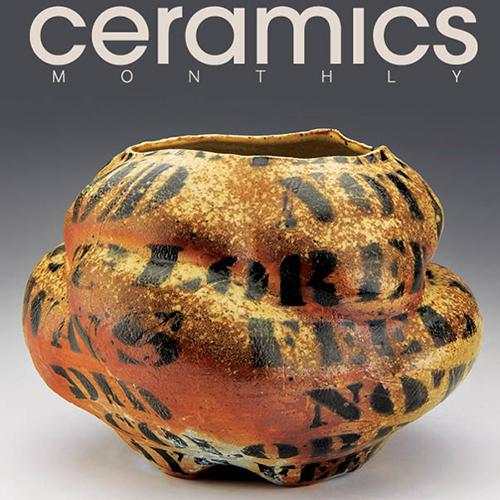 Call for Entries: April 2022Deadlines for exhibitions, fairs, and festivals.
Call for Entries: April 2022Deadlines for exhibitions, fairs, and festivals. -
 Recipes: High-Fire ColorsFind more high-fire recipes from master artist Dan Anderson, who was featured in the March 2022 issue.
Recipes: High-Fire ColorsFind more high-fire recipes from master artist Dan Anderson, who was featured in the March 2022 issue. -
 Tips and Tools: Unearthing PotentialMaximize the use of commercial underglazes and glazes by testing and retesting. Change the variables—application technique, layered products, number of coats—to yield limitless options.
Tips and Tools: Unearthing PotentialMaximize the use of commercial underglazes and glazes by testing and retesting. Change the variables—application technique, layered products, number of coats—to yield limitless options.
- «
- 31
- 32
- 33
- 34 (current)
- 35
- 36
- 37
- 38
- 39
- 40
- »
